 Copyright © Michael Richmond.
This work is licensed under a Creative Commons License.
Copyright © Michael Richmond.
This work is licensed under a Creative Commons License.
Conservation of Linear Momentum
- Although the momentum of individual
objects may change during a collision,
the total momentum of all the objects
in an isolated system remains constant.
- An isolated system is one on which the net force
from external sources is zero.
For example, a hockey puck sliding along the ice is an
isolated system: there is a gravitational force down
on it, but also a normal force from the ice up on it;
the two external forces add up to zero.
- Collisions may be separated into several categories,
some of which are easier to solve than others:
- Completely inelastic collisions involve objects
which stick together afterwards. Kinetic energy is
not conserved, but the result is easy to calculate
via conservation of momentum.
- Partially inelastic collisions involve objects
which separate after they collide, but which are
deformed in some way by the interaction.
Kinetic energy is not conserved.
It's not easy to figure out what happens afterwards,
because there are many possible solutions which
satisfy conservation of momentum.
- Elastic collisions involve objects which separate
after they collide, and which are not changed at all by
the interaction. Billiard balls, ping-pong balls,
and other hard objects may collide elastically.
Kinetic energy is conserved in elastic collisions.
One must use both conservation of energy and
conservation of momentum to figure out the motions of the
objects afterwards. This usually involves solving
2 equations for 2 unknowns.
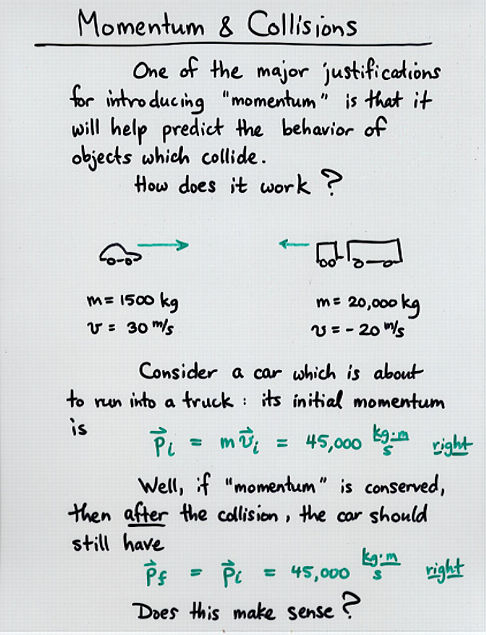

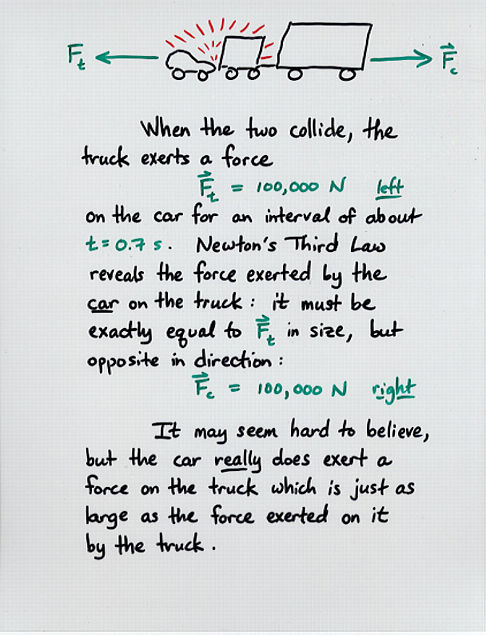
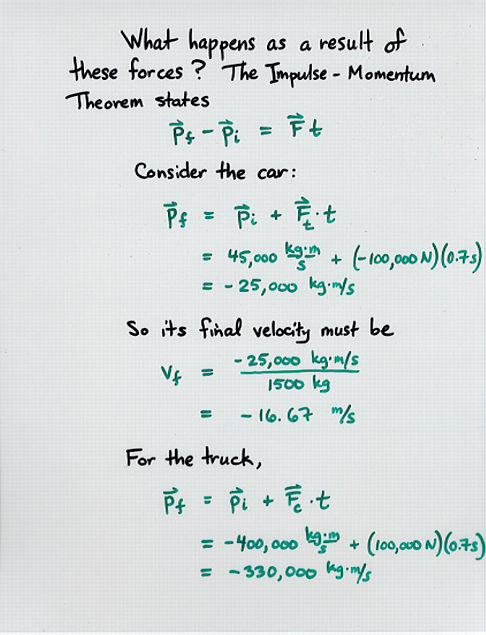
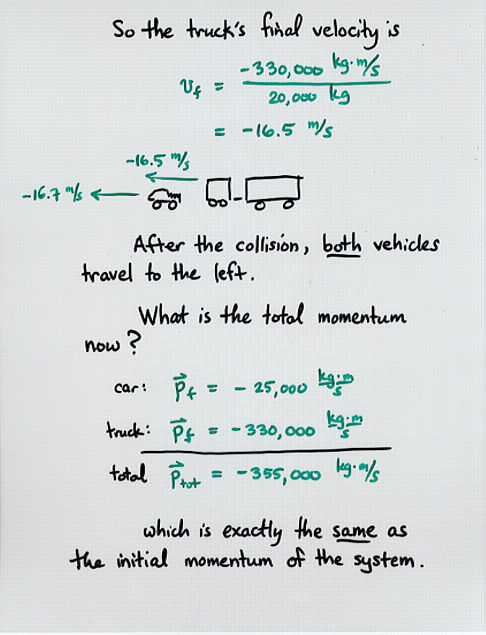

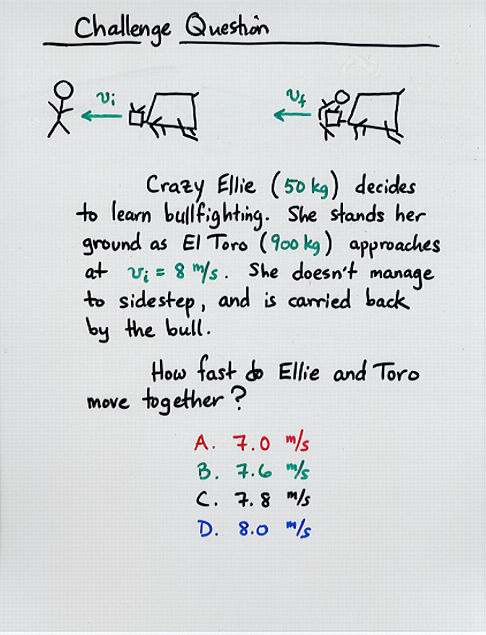
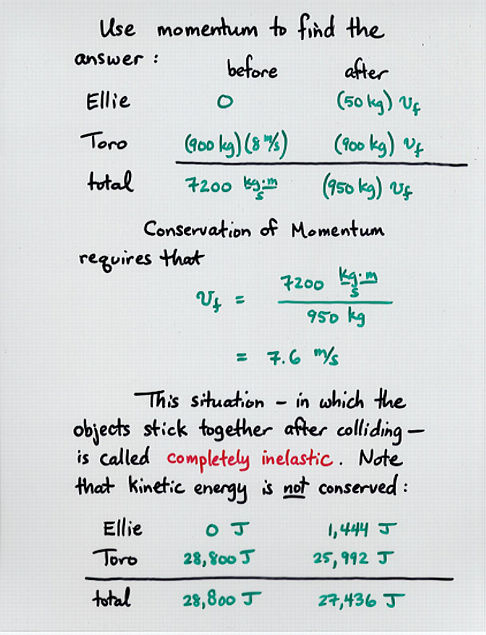
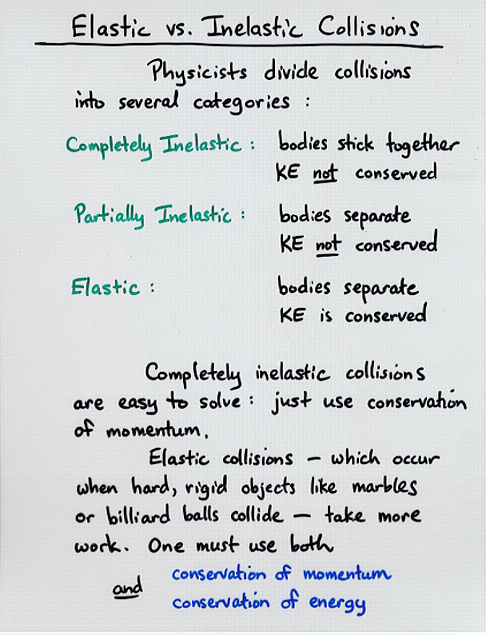
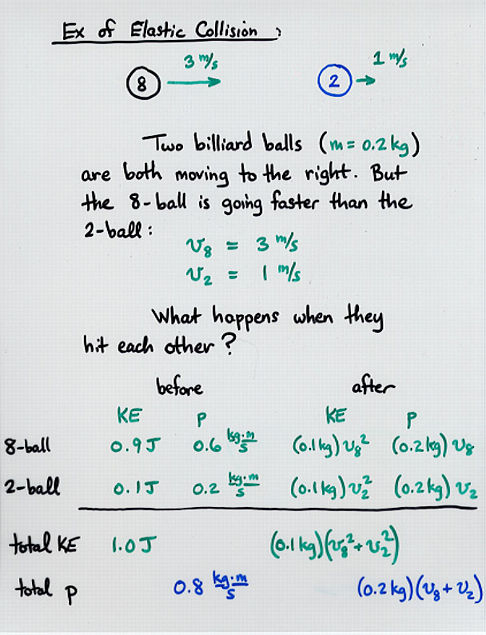
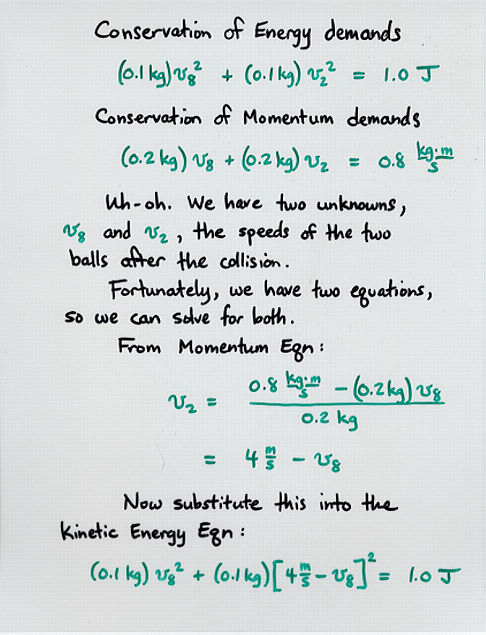
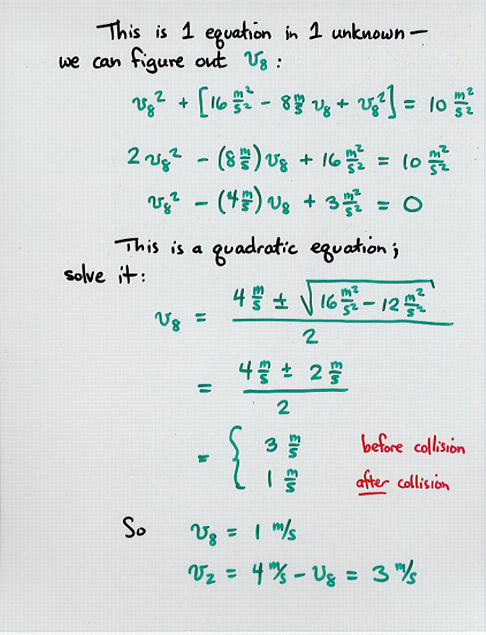
 Copyright © Michael Richmond.
This work is licensed under a Creative Commons License.
Copyright © Michael Richmond.
This work is licensed under a Creative Commons License.

 Copyright © Michael Richmond.
This work is licensed under a Creative Commons License.
Copyright © Michael Richmond.
This work is licensed under a Creative Commons License.












 Copyright © Michael Richmond.
This work is licensed under a Creative Commons License.
Copyright © Michael Richmond.
This work is licensed under a Creative Commons License.